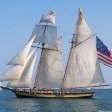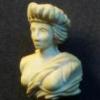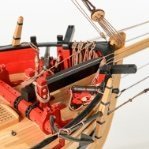MORE HANDBOOKS ARE ON THEIR WAY! We will let you know when they get here.
×
-
Posts
9,532 -
Joined
-
Last visited
Reputation Activity
-
 Chuck got a reaction from FrankWouts in HMS Winchelsea - FINISHED - 1764 - by Chuck (1/4" scale)
Chuck got a reaction from FrankWouts in HMS Winchelsea - FINISHED - 1764 - by Chuck (1/4" scale)
Next up it was time to add the second layer of spirketting (the lower two strakes) and the 7/32" wide plank above the ports. I used planks that were the same width but just 1/32" thick. You can even sand them thinner if you like. I also added the aft shell for fixed block. See it forward of the panelling? This should be added at this stage so you can plank the second layer around it.
Note how I also added one more 1/32" second layer strake above that 7/32" wide strip. The top edge follows along the bottom of the notches in the deck clamp. I use various width strips because you will need to taper it. It is not a consistent width. Just make sure the top edge is flush with the bottom of the notches in the deck clamp. MOST important....look at the forward end of this additional trip. Notice where it starts in relationship to the first notch in the deck clamp. This is important because it will aid you later when we build the platforms for the gangways.
Here is a view of the bow area. Same things apply. Notice where the aft end of the plank ends in this instance. Once again it is even with that first notch.
Sand everything smooth and prep the bulwarks for painting. Then paint it red. But dont paint the fancy panels aft. Here is what my model looks like at this stage. I still have to complete the port side....havent started planking that yet.
-
 Chuck got a reaction from FrankWouts in HMS Winchelsea - FINISHED - 1764 - by Chuck (1/4" scale)
Chuck got a reaction from FrankWouts in HMS Winchelsea - FINISHED - 1764 - by Chuck (1/4" scale)
No not at all....we wont be building each paneled section. They are laser etched. But you could go that route if you are feeling ambitious. Let me show you what I have been up to. The bulwarks have been planked inboard with their first layer of planks. The first photo below shows the different widths I used. This might be slightly different on your model but you get the idea.
The bottom two strakes will have the top edge flush with the bottom of the ports. The three strakes above that between each port were divided up so the top of those was flush with the top of the gun ports.
On top of that goes a strip of 7/32" x 3/64" cedar. This takes you to the shear along the waist. I have NOT simulated the seams with pencil because they will all be painted red. The inboard layer of the fixed blocks were added too and the planking carefully cut around them. BUT....wait until after you plank the first layer of the inboard bulwarks to put the aft-most fixed block shell in position. It falls on the deck clamp which is thicker and this particular fixed block sheel should be glued on TOP of the first layer of Bulwark planking.
The deck clamps are laser cut for you. The quarter deck clamp is in two lengths. You need to add the forward section first. Line up the front of it with the hance piece. This is important!!! The notches laser cut in the deck clamp are for the quarter deck beams. We want to make sure they are lined up properly on both sides. If done properly your deck beams wont be crooked!!! Dont sand the laser char off the seam between the two pieces. This will screw up the placement of the deck beams. Just butt them together.
Once the forward section is glued in place....glue in the aft section. Below.
This was left a bit longer on the aft side so you can tweak it to fit your model. Another really important note.
You will notice that the bottom of the last notch in the deck clamp is even with the top of the stern windows. This is crucial. If your deck beams are too high it would be trouble. A little lower wouldnt hurt though to be safe. So please please make sure that this is correct. You will need to adjust it if needed back there. In fact you should probably clamp the deck planks in position before you glue them in as a test. Make any needed adjustments before you glue them in. And a reminder again to not sand the forward end of this deck clamp where the two sections butt together. Only sand the aft end to make it fit if need be.
Here is a look at the forward deck clamp for the forecastle. Same is true with this one. Position the end along the hance piece in the waist. Then cut the other end at the stem to length which will need to be shaped round later for to make the bowsprit hole nice and neat.
ALSO.....pre bend this deck clamp with heat. I used the hair dryer. Dont try and force bend it at the bow because it will certainly break along the notches for the deck beams.
The next step is to install the paneled sheets on the planked bulwarks. These will appear in the cabins and captains quarters. They are very thin and laser etched with the panel design. The full panels between each gun port are added first. Then the panels above and below each port can be tweaked for a tight fit. You want to have tight seams here. Try not to have the seams to visible when your done. So clean the laser char from them.
Notice the line on the false deck going port to starboard. This indicates where a bulkhead wall will be. Much later in the project of course. Keep this in mins as the forward edge of the first panel must end so you can push the walled bulkead against it later. So examine those notches in the deck clamps. This paneled bulkhead that stretches across the deck will be under the deck beam. Make sure the forward end of this first paneled section will end up under the beam. See how it lines up in the photos below.
The double line on the false deck is another paneled bulkhead that separates the captains cabin. Note how it lines up with the notch for the deck beam above it.
The cannon is just a prototype for the Winnie that I built. I use it to test how it fits on the model as I work on it. It looks like it will fit perfectly once the deck is planked.
A quick note about these panels....I have seen some odd shaped ports on the some of the models being built. Their placements is also sketchy as we have mentioned in many logs. Especially that aft most port and the entrance to the quarter galleries. I mention this because these panels are pretty precise. Although some wiggle room has been designed in them...if you didnt measure your ports properly or if they are in the wrong position, your panels will likely not fit. This is why careful measuring early on is so important. So for that reason....these panels are OPTIONAL. You dont have to use them. Especially if the dont fit properly because of your port placement and gun port shapes. So test them first with a dry fit to see if they will all work. You might need to get a little creative..
And here is a final image of the model today. I am about to add the second layer of spirketting and deck clamps. Then I will paint the buwarks red. But the panels will be left natural.
I havent done this yet on the port side so once I am done I will repeat all of this on the port side. Any questions.
-
 Chuck got a reaction from FrankWouts in HMS Winchelsea - FINISHED - 1764 - by Chuck (1/4" scale)
Chuck got a reaction from FrankWouts in HMS Winchelsea - FINISHED - 1764 - by Chuck (1/4" scale)
Here is a look at the coaming painted black with a grating in position. But these will be removed when I start planking the bulwarks. But first some pre-planking prep work.
Before I can start planking the bulkwarks, I need to add some filler timbers (laser cut) where the hawse holes will be drilled. Then they were faired inboard. In addition, a 1/4" x 3/64" strip was glued down the stem so-to-speak. Shape the top round where the bowsprit hole is neatly. Keep this neat and round. The bulwark planking will abut the side of this vertical strip.
And finally the bulwark planking can begin. The two lower strakes are the first layer of spirketting. The top of the spriketing should run even with the lower edge of the port openings. So you need to do some math. The distance from the false deck to the bottom edge of the ports can vary from model to model. It depends on so much....where you placed your sills....whether or not they are flat or angled inboard....etc.
So you want to run two strakes for the spirketting 3/64" thick. On my model I used one 7/32" wide strake first and then the second upper strake was 1/4" wide. This combination was the perfect width in my case. Although you will inevitable find some ports that are slightly high or slightly low. You will need to adjust these should that arise....but most of mine lined up pretty good. You will be adding a second 1/32" thick layer to the spirketting later on.
I did not simulate the seams with pencil because the bulwarks will be painted red. Except of course for in the captains cabin aft. There is a double line on the false deck showing where the captain cabin starts. So aft of this reference I did in fact simulate the tarred lines.
So this photo shows the two strakes of the spirketting and how they run true with the bottom of the ports. I also added the inboard side of the fixed blocks. You can see one in the photo. I used some wire pushed through the sheave holes from outboard to help line them up. Let me know if you have any questions.
-
 Chuck got a reaction from FrankWouts in HMS Winchelsea - FINISHED - 1764 - by Chuck (1/4" scale)
Chuck got a reaction from FrankWouts in HMS Winchelsea - FINISHED - 1764 - by Chuck (1/4" scale)
Today I planked the inboard stern. There are five strakes. They are all laser cut with the proper curve. Note that I started with the top plank so it would be flush with the bottoms of the windows. We will be adding a thin sill and some molding later on top of this to finish it off. Excuse the dust!!! But each new addition does clean every up a bit and make it look nicer covering up all of the frames and bulkheads. I also decided NOT to high light the seams between these planks as I think they would look too busy. It will look cleaner this way with the paneled rudder trunk and benches in front of it.
Also not how the bottom three planks dont span the entire width of the stern. The center will be left open for the rudder and this whole area will be covered with the paneled rudder trunk. In fact we will be adding the rudder real soon.
But first I want to get the deck planked. So next up was adding the margin planks. These are also laser cut with scarfs. But be aware that it is unlikely that these will fit your model perfectly. There will be so many differences in the way each of you fair inboard and create the inboard shape of the hull. So some of you will no doubt have to use them as a starting point to trace them and cut new ones to fit your model. Its not very hard to do. They are 3/64" thick. The aft section against the transom was positioned first. The aft edge was beveled to fit snug against the transom.
Then I started adding each of the four sections along each side. Starting at the bow and working my way aft.
Next up I will add the waterway which will be a 1/16" x 1/16" strip that is angled on the inboard side. You know the drill. Its the same way as done with all of my projects. Once that is done I will start building the platforms and coaming down the center of the deck so I can plank around them. Here is how she looks now. Testing the deck beams too!!!
-
 Chuck got a reaction from FrankWouts in HMS Winchelsea 1764 by Rustyj - FINISHED - 1:48
Chuck got a reaction from FrankWouts in HMS Winchelsea 1764 by Rustyj - FINISHED - 1:48
Rusty, that does look fantastic. Its looking great. Cant wait to see it in person one of these days.
-
 Chuck got a reaction from FrankWouts in HMS Winchelsea - FINISHED - 1764 - by Chuck (1/4" scale)
Chuck got a reaction from FrankWouts in HMS Winchelsea - FINISHED - 1764 - by Chuck (1/4" scale)
Leopard!!!! No thats not gonna be a choice. Its going to be a long while before I tackle a project as large and complex as the Winnie again. I am going to do a few smaller subjects after this one guys. The number of laser cut parts and designed elements is about four times more than you will find in most or all kits of this size. Thats a lot of parts!!! I want to simplify after this one is done.
And I still have to produce a POF cross section for Winnie!!!! I just want to see if I can tackle the design challenge to give you something new with the cross section. I think it could be a nice extension of the group project as well.
Chuck
-
 Chuck got a reaction from Saburo in HM Cutter Cheerful 1806 by glbarlow - FINISHED - 1:48
Chuck got a reaction from Saburo in HM Cutter Cheerful 1806 by glbarlow - FINISHED - 1:48
No silver bullet. Just take your time and go slow.
-
 Chuck got a reaction from bdgiantman2 in HMS Winchelsea 1764 by Rustyj - FINISHED - 1:48
Chuck got a reaction from bdgiantman2 in HMS Winchelsea 1764 by Rustyj - FINISHED - 1:48
Rusty, that does look fantastic. Its looking great. Cant wait to see it in person one of these days.
-
 Chuck got a reaction from Ronald-V in HMS Winchelsea - FINISHED - 1764 - by Chuck (1/4" scale)
Chuck got a reaction from Ronald-V in HMS Winchelsea - FINISHED - 1764 - by Chuck (1/4" scale)
Leopard!!!! No thats not gonna be a choice. Its going to be a long while before I tackle a project as large and complex as the Winnie again. I am going to do a few smaller subjects after this one guys. The number of laser cut parts and designed elements is about four times more than you will find in most or all kits of this size. Thats a lot of parts!!! I want to simplify after this one is done.
And I still have to produce a POF cross section for Winnie!!!! I just want to see if I can tackle the design challenge to give you something new with the cross section. I think it could be a nice extension of the group project as well.
Chuck
-
 Chuck got a reaction from Peter Bloemendaal in HMS Winchelsea - FINISHED - 1764 - by Chuck (1/4" scale)
Chuck got a reaction from Peter Bloemendaal in HMS Winchelsea - FINISHED - 1764 - by Chuck (1/4" scale)
Leopard!!!! No thats not gonna be a choice. Its going to be a long while before I tackle a project as large and complex as the Winnie again. I am going to do a few smaller subjects after this one guys. The number of laser cut parts and designed elements is about four times more than you will find in most or all kits of this size. Thats a lot of parts!!! I want to simplify after this one is done.
And I still have to produce a POF cross section for Winnie!!!! I just want to see if I can tackle the design challenge to give you something new with the cross section. I think it could be a nice extension of the group project as well.
Chuck
-
 Chuck got a reaction from JeffT in HMS Winchelsea - FINISHED - 1764 - by Chuck (1/4" scale)
Chuck got a reaction from JeffT in HMS Winchelsea - FINISHED - 1764 - by Chuck (1/4" scale)
Leopard!!!! No thats not gonna be a choice. Its going to be a long while before I tackle a project as large and complex as the Winnie again. I am going to do a few smaller subjects after this one guys. The number of laser cut parts and designed elements is about four times more than you will find in most or all kits of this size. Thats a lot of parts!!! I want to simplify after this one is done.
And I still have to produce a POF cross section for Winnie!!!! I just want to see if I can tackle the design challenge to give you something new with the cross section. I think it could be a nice extension of the group project as well.
Chuck
-
 Chuck got a reaction from Gahm in HMS Winchelsea - FINISHED - 1764 - by Chuck (1/4" scale)
Chuck got a reaction from Gahm in HMS Winchelsea - FINISHED - 1764 - by Chuck (1/4" scale)
Leopard!!!! No thats not gonna be a choice. Its going to be a long while before I tackle a project as large and complex as the Winnie again. I am going to do a few smaller subjects after this one guys. The number of laser cut parts and designed elements is about four times more than you will find in most or all kits of this size. Thats a lot of parts!!! I want to simplify after this one is done.
And I still have to produce a POF cross section for Winnie!!!! I just want to see if I can tackle the design challenge to give you something new with the cross section. I think it could be a nice extension of the group project as well.
Chuck
-
 Chuck got a reaction from Dowmer in HMS Winchelsea - FINISHED - 1764 - by Chuck (1/4" scale)
Chuck got a reaction from Dowmer in HMS Winchelsea - FINISHED - 1764 - by Chuck (1/4" scale)
Leopard!!!! No thats not gonna be a choice. Its going to be a long while before I tackle a project as large and complex as the Winnie again. I am going to do a few smaller subjects after this one guys. The number of laser cut parts and designed elements is about four times more than you will find in most or all kits of this size. Thats a lot of parts!!! I want to simplify after this one is done.
And I still have to produce a POF cross section for Winnie!!!! I just want to see if I can tackle the design challenge to give you something new with the cross section. I think it could be a nice extension of the group project as well.
Chuck
-
 Chuck got a reaction from RichardG in HMS Winchelsea - FINISHED - 1764 - by Chuck (1/4" scale)
Chuck got a reaction from RichardG in HMS Winchelsea - FINISHED - 1764 - by Chuck (1/4" scale)
Leopard!!!! No thats not gonna be a choice. Its going to be a long while before I tackle a project as large and complex as the Winnie again. I am going to do a few smaller subjects after this one guys. The number of laser cut parts and designed elements is about four times more than you will find in most or all kits of this size. Thats a lot of parts!!! I want to simplify after this one is done.
And I still have to produce a POF cross section for Winnie!!!! I just want to see if I can tackle the design challenge to give you something new with the cross section. I think it could be a nice extension of the group project as well.
Chuck
-
 Chuck got a reaction from WalrusGuy in HMS Winchelsea - FINISHED - 1764 - by Chuck (1/4" scale)
Chuck got a reaction from WalrusGuy in HMS Winchelsea - FINISHED - 1764 - by Chuck (1/4" scale)
Leopard!!!! No thats not gonna be a choice. Its going to be a long while before I tackle a project as large and complex as the Winnie again. I am going to do a few smaller subjects after this one guys. The number of laser cut parts and designed elements is about four times more than you will find in most or all kits of this size. Thats a lot of parts!!! I want to simplify after this one is done.
And I still have to produce a POF cross section for Winnie!!!! I just want to see if I can tackle the design challenge to give you something new with the cross section. I think it could be a nice extension of the group project as well.
Chuck
-
 Chuck got a reaction from Wacom in HMS Winchelsea - FINISHED - 1764 - by Chuck (1/4" scale)
Chuck got a reaction from Wacom in HMS Winchelsea - FINISHED - 1764 - by Chuck (1/4" scale)
Leopard!!!! No thats not gonna be a choice. Its going to be a long while before I tackle a project as large and complex as the Winnie again. I am going to do a few smaller subjects after this one guys. The number of laser cut parts and designed elements is about four times more than you will find in most or all kits of this size. Thats a lot of parts!!! I want to simplify after this one is done.
And I still have to produce a POF cross section for Winnie!!!! I just want to see if I can tackle the design challenge to give you something new with the cross section. I think it could be a nice extension of the group project as well.
Chuck
-
 Chuck got a reaction from MEDDO in HMS Winchelsea - FINISHED - 1764 - by Chuck (1/4" scale)
Chuck got a reaction from MEDDO in HMS Winchelsea - FINISHED - 1764 - by Chuck (1/4" scale)
Leopard!!!! No thats not gonna be a choice. Its going to be a long while before I tackle a project as large and complex as the Winnie again. I am going to do a few smaller subjects after this one guys. The number of laser cut parts and designed elements is about four times more than you will find in most or all kits of this size. Thats a lot of parts!!! I want to simplify after this one is done.
And I still have to produce a POF cross section for Winnie!!!! I just want to see if I can tackle the design challenge to give you something new with the cross section. I think it could be a nice extension of the group project as well.
Chuck
-
 Chuck reacted to glbarlow in HM Cutter Cheerful 1806 by glbarlow - FINISHED - 1:48
Chuck reacted to glbarlow in HM Cutter Cheerful 1806 by glbarlow - FINISHED - 1:48
Any creative ideas about how to maintain a 1/64th inch gap above, below, and alongside the ports?
I did cut my first run of 3/64" thick planks from 3/16, 1/16 and 5/32 lumber, I'm a bit proud of that having never done that before in volume. Again I will say the Yellow Cedar flew through the saw, and I'm typing with ten fingers.
-
 Chuck got a reaction from FrankWouts in HMS Winchelsea - FINISHED - 1764 - by Chuck (1/4" scale)
Chuck got a reaction from FrankWouts in HMS Winchelsea - FINISHED - 1764 - by Chuck (1/4" scale)
Thank You fellas
Today I added the waterway on top of the margin planks. Originally I was going to use a 1/16" x 1/16" strip. But after some thought I switched and used a 3/64" x 3/64" strip of cedar. I carefully sanded away one corner so the strip was like a quarter round molding. Then I glued it along the bulwarks.
Then it was time for the checker pattern floor in the great cabin. This is 3/64" thick. It is laser etched with the pattern as you can see. It is cut over-sized so with a little tweaking it should fit everyone's model. So it is crucial that you make a paper pattern first that fits in the space tight. Then trace it on the sheet and cut it to fit your model. Try for a nice tight fit!!! I prefer a subtle pattern that isnt too dark. So many models end up with a black and white pattern which I find so distracting.
Remember where the forward bulkhead will be so you position the forward edge correctly. My floor ends right under where the deck beam will be so I know the bulkhead will sit on top of the edge of the checker pattern.
From this point, I will slowly make my way forward building the various coamings and partners. This needs to be done so we can plank the deck properly around these items. You can see that the one coaming and grating was completed. I wont add the ladder until later. But I did manage to build the capstan partners.
The capstan partner sits against the coaming. It is also laser cut in three pieces and glues together quickly. I simulated the seams between each section. I also softened the top edge because it shouldnt be a hard edge.
One interesting feature about the partners is that it should NOT be glued directly to the false deck. The deck is sloped which is to be expected. But the partners need to be level otherwise the capstan will not work properly. This means the forward edge of the partners need to be lifted a bit to raise it up and level it off. I did this with a little cheat. I added a small length of a 1/32" strip under the forward edge which will be covered up after we plank the deck. You will notice how it looks lifted up on the forward side and level. If you need to sand the bottom of the aft edge a bit to make it level then that is OK also.
I simulated the bolts using 20 pound black monfilament. You guys should pick some up in various sizes as we will be using it a lot throught the model.
Chuck
-
 Chuck got a reaction from FrankWouts in HMS Winchelsea - FINISHED - 1764 - by Chuck (1/4" scale)
Chuck got a reaction from FrankWouts in HMS Winchelsea - FINISHED - 1764 - by Chuck (1/4" scale)
Thanks...I have actually been throwing two ideas around in my head. I am seriously considering the Hornet of 1812. Or a Colonial Schooner. But leaning really hard in the direction of Hornet.
-
 Chuck got a reaction from MEDDO in Queen Anne Barge by MEDDO - FINISHED - Syren - scale 1:24
Chuck got a reaction from MEDDO in Queen Anne Barge by MEDDO - FINISHED - Syren - scale 1:24
Lovely!!!!! Brings back memories. This is when it really starts coming together.
-
 Chuck got a reaction from ccoyle in HMS Winchelsea - FINISHED - 1764 - by Chuck (1/4" scale)
Chuck got a reaction from ccoyle in HMS Winchelsea - FINISHED - 1764 - by Chuck (1/4" scale)
Thank You fellas
Today I added the waterway on top of the margin planks. Originally I was going to use a 1/16" x 1/16" strip. But after some thought I switched and used a 3/64" x 3/64" strip of cedar. I carefully sanded away one corner so the strip was like a quarter round molding. Then I glued it along the bulwarks.
Then it was time for the checker pattern floor in the great cabin. This is 3/64" thick. It is laser etched with the pattern as you can see. It is cut over-sized so with a little tweaking it should fit everyone's model. So it is crucial that you make a paper pattern first that fits in the space tight. Then trace it on the sheet and cut it to fit your model. Try for a nice tight fit!!! I prefer a subtle pattern that isnt too dark. So many models end up with a black and white pattern which I find so distracting.
Remember where the forward bulkhead will be so you position the forward edge correctly. My floor ends right under where the deck beam will be so I know the bulkhead will sit on top of the edge of the checker pattern.
From this point, I will slowly make my way forward building the various coamings and partners. This needs to be done so we can plank the deck properly around these items. You can see that the one coaming and grating was completed. I wont add the ladder until later. But I did manage to build the capstan partners.
The capstan partner sits against the coaming. It is also laser cut in three pieces and glues together quickly. I simulated the seams between each section. I also softened the top edge because it shouldnt be a hard edge.
One interesting feature about the partners is that it should NOT be glued directly to the false deck. The deck is sloped which is to be expected. But the partners need to be level otherwise the capstan will not work properly. This means the forward edge of the partners need to be lifted a bit to raise it up and level it off. I did this with a little cheat. I added a small length of a 1/32" strip under the forward edge which will be covered up after we plank the deck. You will notice how it looks lifted up on the forward side and level. If you need to sand the bottom of the aft edge a bit to make it level then that is OK also.
I simulated the bolts using 20 pound black monfilament. You guys should pick some up in various sizes as we will be using it a lot throught the model.
Chuck
-
 Chuck got a reaction from archjofo in HMS Winchelsea - FINISHED - 1764 - by Chuck (1/4" scale)
Chuck got a reaction from archjofo in HMS Winchelsea - FINISHED - 1764 - by Chuck (1/4" scale)
Today I planked the inboard stern. There are five strakes. They are all laser cut with the proper curve. Note that I started with the top plank so it would be flush with the bottoms of the windows. We will be adding a thin sill and some molding later on top of this to finish it off. Excuse the dust!!! But each new addition does clean every up a bit and make it look nicer covering up all of the frames and bulkheads. I also decided NOT to high light the seams between these planks as I think they would look too busy. It will look cleaner this way with the paneled rudder trunk and benches in front of it.
Also not how the bottom three planks dont span the entire width of the stern. The center will be left open for the rudder and this whole area will be covered with the paneled rudder trunk. In fact we will be adding the rudder real soon.
But first I want to get the deck planked. So next up was adding the margin planks. These are also laser cut with scarfs. But be aware that it is unlikely that these will fit your model perfectly. There will be so many differences in the way each of you fair inboard and create the inboard shape of the hull. So some of you will no doubt have to use them as a starting point to trace them and cut new ones to fit your model. Its not very hard to do. They are 3/64" thick. The aft section against the transom was positioned first. The aft edge was beveled to fit snug against the transom.
Then I started adding each of the four sections along each side. Starting at the bow and working my way aft.
Next up I will add the waterway which will be a 1/16" x 1/16" strip that is angled on the inboard side. You know the drill. Its the same way as done with all of my projects. Once that is done I will start building the platforms and coaming down the center of the deck so I can plank around them. Here is how she looks now. Testing the deck beams too!!!
-
 Chuck got a reaction from glbarlow in HMS Winchelsea - FINISHED - 1764 - by Chuck (1/4" scale)
Chuck got a reaction from glbarlow in HMS Winchelsea - FINISHED - 1764 - by Chuck (1/4" scale)
Thanks...I have actually been throwing two ideas around in my head. I am seriously considering the Hornet of 1812. Or a Colonial Schooner. But leaning really hard in the direction of Hornet.
-
 Chuck got a reaction from MEDDO in HMS Winchelsea - FINISHED - 1764 - by Chuck (1/4" scale)
Chuck got a reaction from MEDDO in HMS Winchelsea - FINISHED - 1764 - by Chuck (1/4" scale)
Thanks...I have actually been throwing two ideas around in my head. I am seriously considering the Hornet of 1812. Or a Colonial Schooner. But leaning really hard in the direction of Hornet.

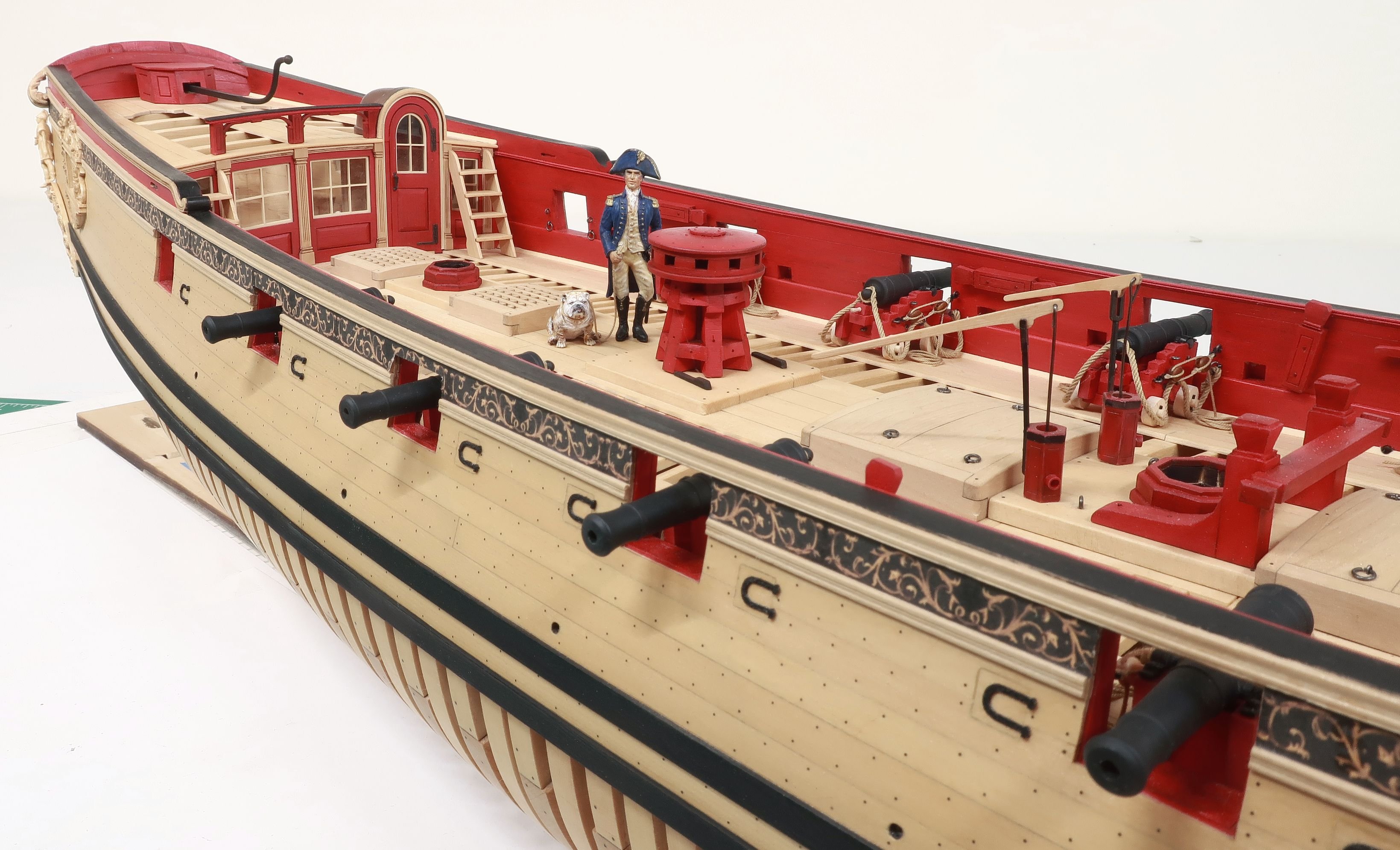
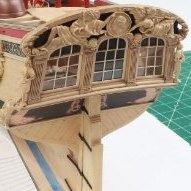



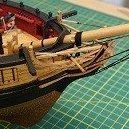
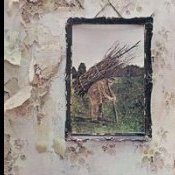
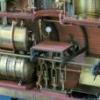
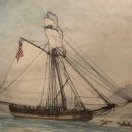

.thumb.jpg.62d1d69fed1f32364417cb1f9cdeb009.jpg)

